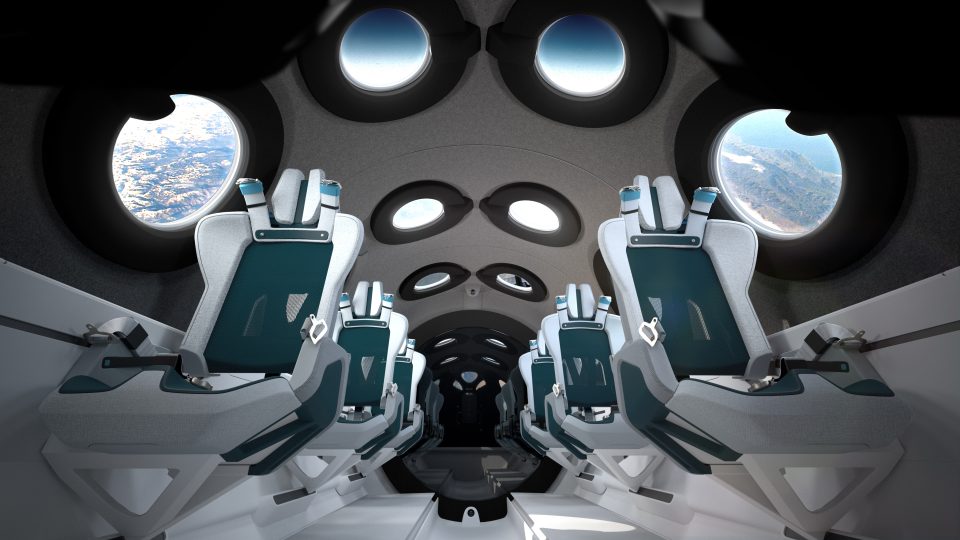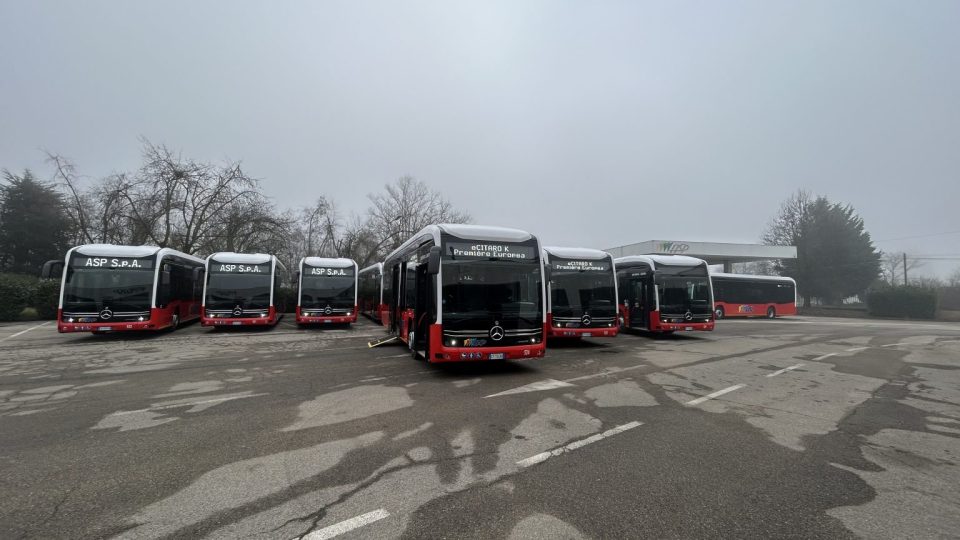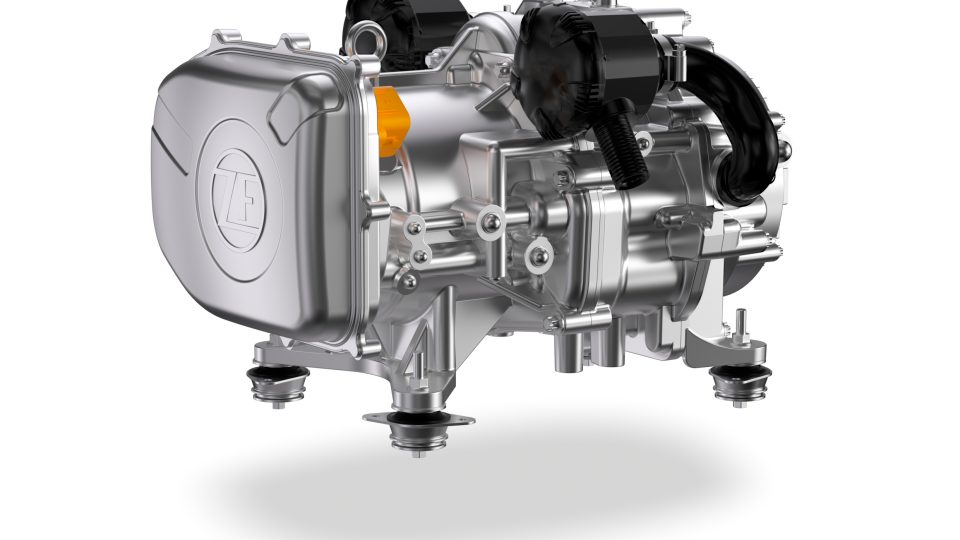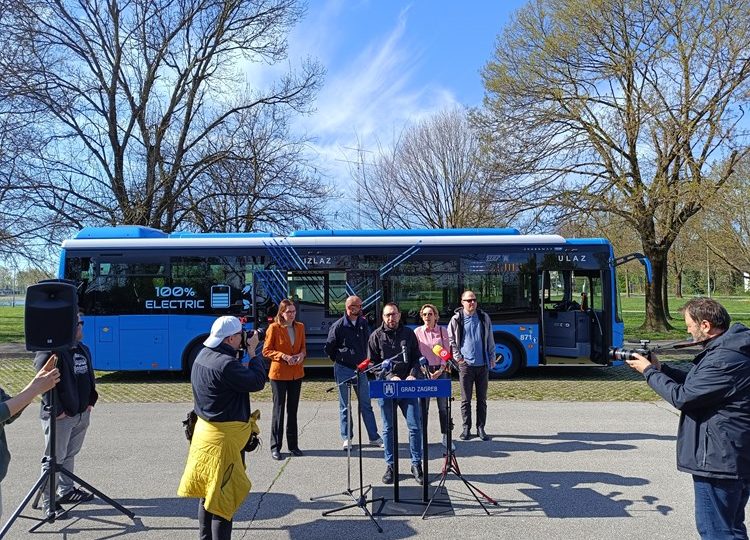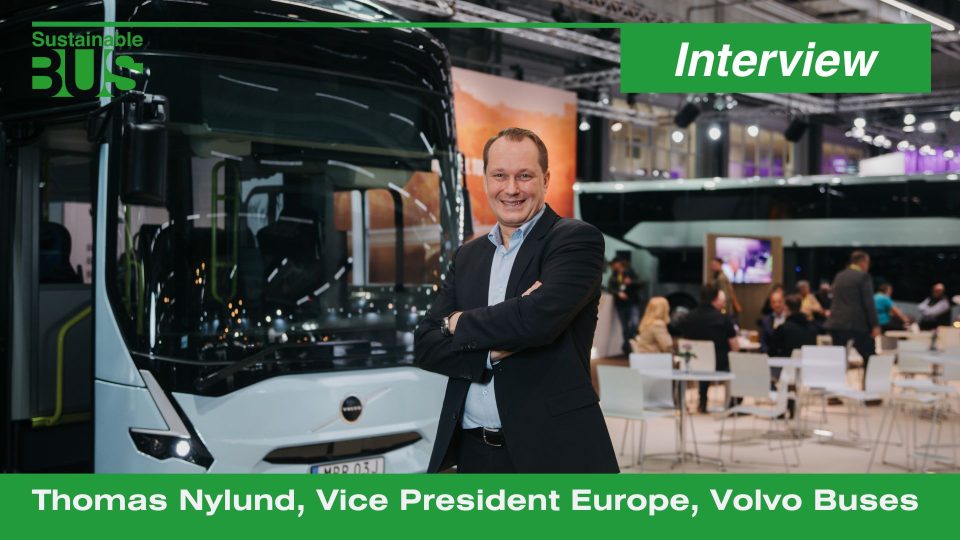Goal: zero emissions. Hydrogen? «It has pros regarding operations». Our interview with SASA Bolzano’s general manager Petra Piffer
Holistic approach. Paradigm shift. Evolving company skills. These are issues that remain firmly implied – when they are not made explicit – while talking with Petra Piffer, general manager of SASA Bolzano, the public transport company that embodies the subject of the transition to hydrogen in Italy, with projects on this technology launched already in […]
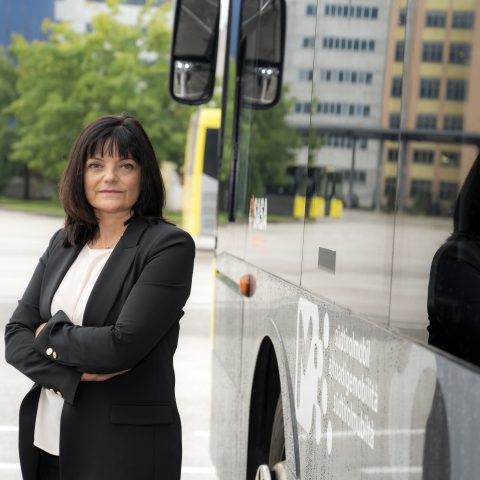
Holistic approach. Paradigm shift. Evolving company skills. These are issues that remain firmly implied – when they are not made explicit – while talking with Petra Piffer, general manager of SASA Bolzano, the public transport company that embodies the subject of the transition to hydrogen in Italy, with projects on this technology launched already in 2013 and 12 new vehicles delivered earlier this year.
One of the largest fuel cell bus fleets in Europe operates in Bolzano, and a dedicated filling station is currently being set up in the bus depot. This is the result of a process that began in advance and has been pursued with an approach that favours technological homogeneity and fleet renewal over the ‘marketing’ of electric vehicles at all costs.
Our goal is zero emissions. In order to achieve this, we have taken a two-ways approach: on the one hand, the gradual introduction of electric vehicles, and on the other, the massive renewal of the fleet with buses that combine low emissions and easy-to-manage drivetrain as a transitional technology. We have turned to mild hybrid diesel traction, with which we have significantly modernized the fleet
Petra Piffer, general manager of SASA Bolzano
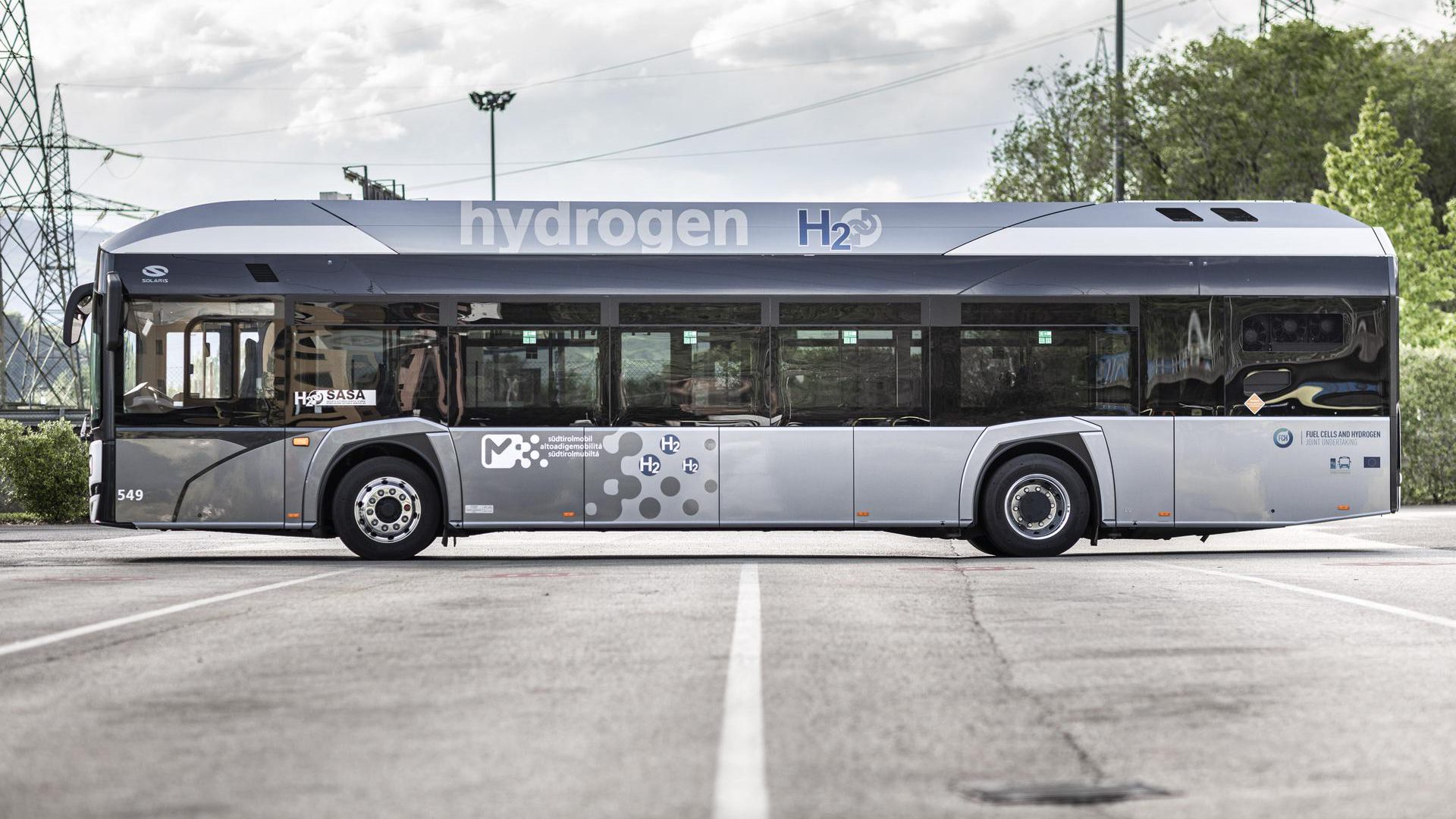
Petra Piffer, SASA: «Our goal is zero emissions»
Earlier this year you presented a fleet of new fuel cell buses. But hydrogen is nothing new in SASA’s fleet and projects…
«We have long been sensitive to zero emissions, with hydrogen-powered buses in regular service since 2013. A dedication that stems from the strong impact that the Brenner artery has on the territory, and the consequent idea of the ‘green corridor’. At that time, hydrogen was the only vector capable of guaranteeing zero emissions. We started with the European CHIC project, whose aim was to field-test a technology that was still in its pre-series stage. We bought five buses that have exceeded all expectations, since they now have more than double the number of hours of operation of the fuel cell (initially estimated at 10,000). This experience led to the European projects JIVE 1 and JIVE 2, through which we purchased the 12 buses that have been delivered this year».
What other technologies have you focused on?
«A very strong choice we made in our fleet conversion’s strategy was the phase out of CNG-powered vehicles, which covered about half the fleet. Our path is clear: the goal is zero emissions, the abandonment of fossil fuels. In order to achieve this, we have taken a two-ways approach: on the one hand, the gradual introduction of electric vehicles, and on the other, the massive renewal of the fleet with buses that combine low emissions and easy-to-manage drivetrain as a transitional technology. We have turned to mild hybrid diesel traction, with which we have significantly modernized the fleet. Today, almost two-thirds of the fleet is made up of mild hybrids and we have an average fleet age of just over four years. We thought it would be better to prepare for the transition to electric vehicles by proceeding in a uniform manner, rather than introducing too many different technologies».
How is SASA’s fleet composed today?
«We have 175 vehicles, around 100 of which are equipped with mild hybrid technology, around 10 zero-emission vehicles (which will become 30 within a year) and the rest are diesel vehicles from Euro V upwards».
We will have to convert the depot to prepare it for the new technologies. This will happen in the next 2-3 years. It is planned that our depot will then be connected to the hydrogen production centre via a pipeline. When you choose these technologies, you don’t choose a bus but a whole supply chain
Petra Piffer, general manager of SASA Bolzano
Fuel cell buses vs battery-electric buses?
The general context sees great popularity for battery-powered buses. What are the reasons for your choice of hydrogen?
«We like hydrogen because it has advantages from the point of view of operations. We use them almost on a one-to-one basis compared to ICE buses. It’s a less disruptive technology than battery-electric in terms of management. Obviously, the hydrogen supply has to be taken into account and it has its own complications. But I am confident that as soon as the market for green and blue hydrogen starts up, the problem will be solved».
You are now building a filling infrastructure directly at your depot in Bolzano Sud.
«Exactly. This is a first, temporary step. Then we will have to convert the depot to prepare it for the new technologies. This will happen in the next 2-3 years. It is planned that our depot will then be connected to the hydrogen production centre via a pipeline. We are part of the European Life Alps project, which aims to create an ecosystem around hydrogen. After all, when you choose these technologies, you don’t choose a bus but a whole supply chain».
If you want to make a new technology mature, you need to work on both supply and demand. As far as financing models are concerned, today we have to buy buses and have no alternative but to ask for subsidies: we should find more innovative management models that take into account the duration of the investment. And it must also be said that energy utilities can be interesting partners, not least because of their know-how
Petra Piffer, general manager of SASA Bolzano

The current purchase cost of hydrogen buses is a topic of debate. How have these buses been financed and how do you plan to finance future projects?
«Two-thirds of these buses are financed by the autonomous province of Bolzano, and one-third by the EU. Plus, we will soon be bringing eight battery-electric vehicles into service (9-meter vehicles awarded to Solaris) in historic city centres, and we will be purchasing a further 23 battery-electric buses within two to three years. These buses are all financed through the service contract: they are basically self-financed. But let me add one thing…».
Please.
«The funds are indeed indispensable when you’re talking about large numbers of buses and infrastructure. Adapting a depot to new technologies requires huge investments».
Petra Piffer, SASA Bolzano: e-buses and funding methods
In your opinion, what funding mechanisms can actually be helpful in order to make energy transition economically sustainable?
«If you want to make a new technology stable, you need to work on both supply and demand. As far as financing models are concerned, today we have to buy buses and have no alternative but to ask for subsidies: we should find more innovative management models that take into account the duration of the investment. And it must also be said that energy utilities can be interesting partners, not least because of their know-how».
There is a lot of talk about project financing and public-private partnerships (PPPs). But these tools have not yet found a place in the regulatory framework of most of our public transport systems…
«Within the electrification process, new financing models are being created. To us, PPPs and project financing would be interesting tools».
The change from ICE to electrified drivetrains is a real paradigm shift, also at a cultural level for public transport companies. How is SASA changing to meet this challenge?
«It is indeed a paradigm shift. The management of these vehicles is becoming increasingly digitalized. This is leading to the emergence of a range of new professional skills, and others will have to adapt. As far as drivers are concerned, adequate training is all that is needed. On the maintenance side, a totally different scenario opens up. One is the high-voltage aspect: we have trained our workforce in this respect, with all the necessary certifications».
We haven’t opted for full service contracts for the battery-electric buses, because we realized from our experience with the first hydrogen vehicles that, using full service deals, you don’t learn much. I’m convinced that skilled maintenance is of great value to the company. It costs more in the beginning, but it pays off in the long run
Petra Piffer, general manager of SASA Bolzano
Don’t you use full service contracts?
«We haven’t opted for full service contracts for the battery-electric buses, because we realized from our experience with the first hydrogen vehicles that, using full service deals, you don’t learn much. I’m convinced that skilled maintenance is of great value to the company. It costs more in the beginning, but it pays off in the long run».
Looking to the future, how have you planned the evolution of the fleet?
«For the urban services we plan in 2024-25 to have a first, large, conversion slot. We will replace around 50 diesel vehicles with zero-emission buses. We expect to have 75 zero-emission buses by 2030, while the remaining 100 are today almost new and will be brought to the end of their life, so they will be converted around 2030. At that point the final step of the transition to zero emissions will begin».
Do you agree with the scheme that see, in the future, the city centres as the ‘habitat’ of battery-electric vehicles and the suburban areas as the domain of fuel cell vehicles?
«We are studying the right mix of electric and hydrogen. It will depend on the type and location of infrastructures. Electricity and hydrogen have different perimeters and characteristics. In some areas it might be more convenient to put an electric vehicle even in the suburban area, perhaps where a medium voltage station for ski lifts or cable cars is already installed. The issue of the energy mix must be carefully examined, from an holistic perspective».

